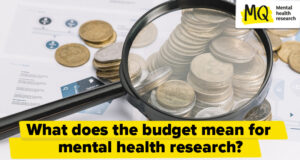
The use of cannabis in women of reproductive age has increased significantly as more states have legalized the recreational and medical use of cannabis. Despite decreasing rates of alcohol and tobacco use during pregnancy, cannabis use during pregnancy is on the rise. Many studies have raised concerns regarding the impact of prenatal cannabis exposure on child development and behavior. Over the past year, there have been quite a few articles examining whether cannabis exposure during pregnancy is associated with autism spectrum disorder (ASD) and other neuropsychiatric disorders, including attention-deficit/hyperactivity disorder (ADHD).
Thus far, studies evaluating the association between prenatal cannabis use and risk for autism spectrum disorders (ASD) in exposed children have yielded conflicting results. In 2020, Corsi and colleagues conducted a population-based retrospective cohort study in Ontario, Canada and documented an increased risk of ASD diagnoses associated with maternal self-reported use of cannabis during pregnancy. In contrast, a large multisite case-control study in the United States reported no association between peripregnancy (before and during pregnancy and while breastfeeding) cannabis use and ASD diagnoses.
The most recent study (Avalos et al, 2024) is a retrospective birth cohort study including children born between 2011 and 2019 to pregnant Kaiser Permanente Northern California members. screened for prenatal cannabis use during pregnancy. This study included 178,948 singleton pregnancies: 27.3% Asian or Pacific Islander, 23.9% Hispanic, 5.4% non-Hispanic Black, and 39.5% non-Hispanic White. The median (IQR) maternal age at pregnancy onset was 31 (6) years. In this cohort, 8486 (4.7%) screened positive for cannabis use, 7054 (3.9%) using urine toxicology testing and 3662 (2.0%) by self-report. The frequency of self-reported use was monthly or less for 1.1% of the pregnancies, weekly for 0.5%, and daily for 0.4%.
Although prenatal cannabis use early in pregnancy was associated with an increased risk of child ASD in unadjusted analyses; however, after adjusting for maternal characteristics, the researchers observed that maternal prenatal cannabis use was not associated with child ASD (hazard ratio [HR], 1.05; 95% CI, 0.84-1.32). The data suggests that there may be an association with higher frequency (daily) use, but further research is needed as the findings in this subset of the population did not reach the level of statistical significance after adjustment for sociodemographic characteristics.
Data from Systematic Reviews and Meta-Analyses
Studies examining long-term risk vary considerably in terms of methodology, differing in the documentation of cannabis exposures (self-report vs. urine drug testing), assessment of frequency and intensity of exposure, method of ASD diagnosis in children (maternal report, clinical assessments, medical records), duration of follow-up, and accounting for other relevant exposures (smoking, BMI, maternal psychiatric symptoms) Meta-analyses are often helpful to us in making sense of heterogeneous data across multiple studies. In the last year alone, there have been two meta-analyses looking at the risk of neurodevelopmental and psychiatric disorders in children with prenatal exposure to cannabis.
Bassalov and colleagues analyzed data from 17 eligible studies, representing 534,445 children. After adjusting for potential confounders, the researchers observed no association between prenatal cannabis exposure and risk for autism spectrum disorder; the pooled odds ratio (OR) was 1.04 (95% CI 0.74-1.46).
The pooled OR was elevated for ADHD (OR 1.13; 95% CI 1.01-1.26) and for cannabis use (OR 1.20; 95% CI 1.01-1.42). Increased risk was not observed for other disorders; for psychotic symptoms, the pooled OR was 1.29 (95% CI 0.97-1.72); for anxiety, the pooled OR was 1.34 (95% CI 0.79-2.29); and for depression, the pooled OR was 0.72 (95% CI 0.11-4.57).
Tadesse and colleagues also conducted a meta-analysis. Although similar to the other meta-analysis in terms of how eligible studies were selected, the analysis was based on a slightly different set of studies. Data from 14 primary studies was analyzed, consisting of 10 studies reporting on risk for ADHD and four on ASD, with a total of 203,783 participants. Risk of ASD was studied in 173,035 participants.
In contrast to the Bassalov meta-analysis, Tadesse et al observed an increased risk of ASD with a relative risk or RR of 1.30 (95 % CI 1.03-1.64) in children with in utero cannabis exposure compared to non-exposed children. Similar to Bassalov meta-analysis, the Tadesso study also indicated an increased risk of ADHD symptoms and/or disorder in cannabis-exposed children.
The fact that these two meta-analyses have yielded different results speaks to the complexity inherent in assessing the long-term effects of prenatal cannabis exposure. One of the major challenges in analyzing the data is the heterogeneity observed in the exposed populations. While some women report using cannabis on a daily basis, most of the women use cannabis only on a weekly or monthly basis. If we do not consider outcomes in these populations separately, we may be underestimating the risks of exposure.
What Do We Tell Our Patients?
Based on the findings of these two meta-analyses and several large cohort studies, we cannot conclude that cannabis is “safe” for use during pregnancy. Although several studies do not show a strong association between prenatal cannabis exposure and risk for autism spectrum disorder, multiple studies have consistently demonstrated a link between prenatal cannabis exposure and risk for ADHD and worse executive function.
There is also a suggestion that prenatal cannabis exposure may contribute to subsequent vulnerability to cannabis use in exposed offspring; however, few studies have followed prenatally exposed children until adolescence. Studies that have been able to follow children for a longer period of time, such as the Adolescent Brain Cognitive Development (ABCD) study, have observed increased risk for psychiatric disorders in cannabis-exposed children compared to unexposed children.
In addition, several studies (including the Alvalos study above) have suggested that heavy cannabis use may be associated with greater risk.
At the present time, we would urge all of our patients to refrain from the use of cannabis during pregnancy. While abstaining from cannabis may be relatively easy for women who use cannabis a few times a month, we must consider that daily users may need additional support to be able to abstain from cannabis during pregnancy. Furthermore, we must consider the possibility that cannabis is being used to manage mood or anxiety symptoms or sleep problems; in this case, we may be able to offer safer alternatives to cannabis for managing these symptoms.
Ruta Nonacs, MD PhD
References
Avalos LA, Shenkute M, Alexeeff SE, Oberman N, Croen LA, Davignon M, Adams SR, Ansley D, Castellanos C, Young-Wolff KC. Maternal Prenatal Cannabis Use and Child Autism Spectrum Disorder. JAMA Netw Open. 2024 Oct 1;7(10):e2440301.
Bassalov H, Yakirevich-Amir N, Reuveni I, Monk C, Florentin S, Bonne O, Matok I. Prenatal cannabis exposure and the risk for neuropsychiatric anomalies in the offspring: a systematic review and meta-analysis. Am J Obstet Gynecol. 2024 Jun 20:S0002-9378(24)00682-3.
Corsi DJ, Donelle J, Sucha E, et al. Maternal cannabis use in pregnancy and child neurodevelopmental outcomes. Nat Med. 2020;26(10):1536-1540.
DiGuiseppi C, Crume T, Van Dyke J, et al. Peri-pregnancy cannabis use and autism spectrum disorder in the offspring: findings from the study to explore early development. J Autism Dev Disord. 2022;52(11):5064-5071.
Tadesse AW, Dachew BA, Ayano G, Betts K, Alati R. Prenatal cannabis use and the risk of attention deficit hyperactivity disorder and autism spectrum disorder in offspring: A systematic review and meta-analysis. J Psychiatr Res. 2024 Mar;171:142-151.




